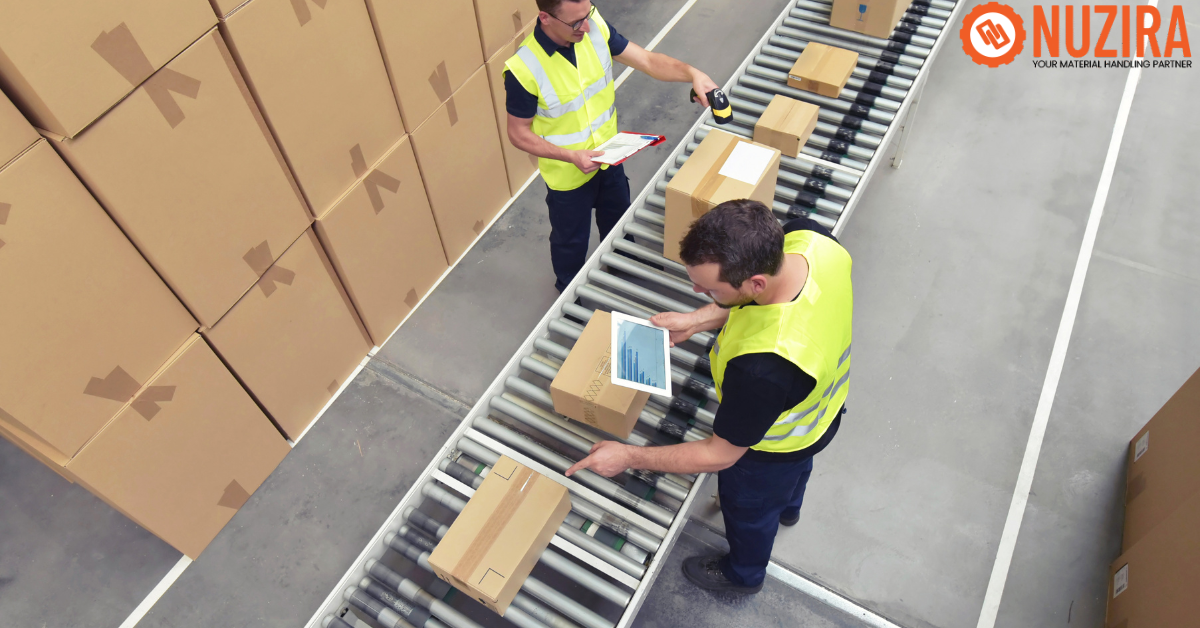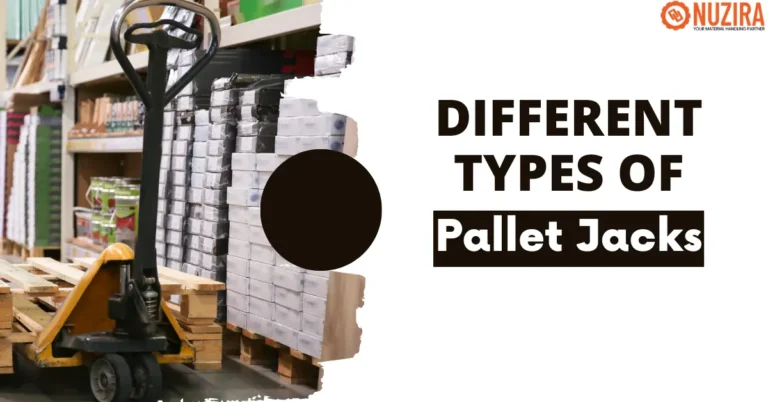What is Automated Material Handling?
Efficient movement of goods is the backbone of modern supply chains. As industries grow more complex, traditional manual handling methods often struggle to keep pace with rising demand, tighter timelines, and increasing accuracy requirements. This is where automated material handling comes in, transforming how businesses transport, store, and manage goods inside warehouses, factories, and distribution centers.
Understanding Automated Material Handling
Automated material handling refers to the use of technology-driven systems and equipment to move, control, store, and protect materials throughout manufacturing, warehousing, and distribution processes—without relying heavily on manual labor. Instead of workers physically lifting, transporting, or sorting items, machines and intelligent systems take over, ensuring consistency, speed, and precision.
Unlike manual systems, automation reduces human error, improves safety, and allows operations to scale without significantly increasing labor costs. It’s not just about replacing physical effort—it’s about creating an integrated, smarter workflow where every movement of material is optimized.
If you want to understand how automation compares to traditional practices, check out our guide on Manual vs Automated Material Handling Systems: Which is Better.
Why Automated Material Handling Matters
The shift toward automation is driven by both necessity and opportunity. Businesses face constant pressure to meet fast delivery expectations, manage rising operational costs, and maintain workplace safety. Automated material handling offers solutions to these challenges by:
- Boosting efficiency – Automated systems operate continuously with minimal downtime, speeding up workflows and reducing bottlenecks.
- Enhancing safety – Machines handle repetitive, heavy, or hazardous tasks, lowering workplace injuries.
- Improving accuracy – Automated sorting, scanning, and tracking reduce errors in picking, packing, and inventory management.
- Supporting scalability – As demand grows, automation makes it easier to expand operations without proportionally increasing staff.
In short, it’s not just about moving items faster—it’s about creating resilient and reliable systems that support long-term growth.
In 2024, the global automated material handling equipment market was valued at approximately USD 65.74 billion, and it’s projected to grow at a CAGR of 9.9% through 2030.
Types of Automated Material Handling Systems
Automated material handling isn’t a one-size-fits-all solution. Different industries and facilities require tailored systems depending on the size of their operations, the type of goods they manage, and their efficiency goals. Understanding the types of automated material handling systems helps businesses choose the right mix of technologies to maximize productivity.
1. Automated Storage and Retrieval Systems (AS/RS)
AS/RS are computer-controlled systems designed to automatically place and retrieve loads from defined storage locations. They often use cranes, shuttles, or vertical lift modules to move goods quickly and accurately.
- Where they’re used: High-density warehouses, e-commerce fulfillment centers, and manufacturing plants.
- Benefits: They save valuable floor space, reduce labor needs, and improve inventory accuracy by keeping real-time digital records.
2. Conveyor Systems
Conveyors are among the most common automated handling tools. They move goods from one point to another using belts, rollers, or overhead tracks. Modern conveyors can integrate with sensors and smart controls to adapt to changing workloads.
- Where they’re used: Assembly lines, distribution centers, and airports.
- Benefits: They streamline continuous movement of goods, minimize manual lifting, and keep workflows steady without interruption.
3. Automated Guided Vehicles (AGVs) and Autonomous Mobile Robots (AMRs)
Both AGVs and AMRs are self-moving machines designed to transport materials. While AGVs follow fixed paths (like magnetic strips or wires), AMRs use advanced navigation systems, such as sensors and mapping technology, to move freely and adapt to their surroundings.
- Where they’re used: Warehouses, hospitals, and factories.
- Benefits: They reduce reliance on forklifts, improve safety in busy environments, and offer flexibility as layouts change.
4. Robotic Picking and Palletizing Systems
Robotic arms and gantry robots are increasingly used for picking individual items, placing them into containers, or stacking them on pallets. These systems are often integrated with vision technology to handle items of varying shapes and sizes.
- Where they’re used: Food and beverage facilities, e-commerce packaging, and large-scale logistics hubs.
- Benefits: They speed up order fulfillment, reduce repetitive strain injuries for workers, and ensure consistent stacking or packing quality.
5. Sortation Systems
Sortation systems automatically identify and direct items to specific destinations using barcodes, RFID tags, or other scanning methods. They can handle thousands of items per hour with remarkable accuracy.
- Where they’re used: Postal services, parcel delivery companies, and retail distribution.
- Benefits: They minimize human sorting errors, accelerate delivery timelines, and optimize throughput during peak demand seasons.
Choosing the Right System
Each system serves a unique role, and businesses often use a combination to create a fully integrated operation. For example, a warehouse may use conveyors for movement, AS/RS for storage, and AMRs for flexible transport. The right system depends on factors such as budget, product type, facility size, and long-term business goals.
The Future of Automated Material Handling
As industries evolve, automated material handling will continue to play a central role in shaping how goods move from production lines to customers’ hands. With the rise of artificial intelligence, machine learning, and IoT-enabled devices, these systems are becoming smarter, more adaptive, and more connected than ever before. Businesses that embrace automation early are not only improving efficiency today but also building resilience for tomorrow’s challenges.
We can expect future systems to:
- Adapt in real time – Using predictive analytics, equipment will anticipate demand and adjust operations automatically.
- Integrate seamlessly – Automation will connect with broader supply chain systems, ensuring data flows effortlessly from warehouse floors to business dashboards.
- Promote sustainability – Energy-efficient designs and optimized workflows will help companies reduce waste and carbon emissions.
Conclusion
To recap:
- Automated material handling replaces manual processes with technology-driven systems that improve accuracy, safety, and efficiency.
- The types of automated material handling systems—from conveyors and AS/RS to robots and sortation machines—each serve unique roles in streamlining operations.
- Looking ahead, automation will continue to transform industries, making supply chains faster, smarter, and more sustainable.
Ultimately, investing in automated material handling is more than adopting machines—it’s about future-proofing your business. By choosing the right systems, companies can scale operations, improve worker safety, and meet customer expectations with confidence.
If you’re ready to explore how automation can elevate your operations, visit our website to learn more and discover solutions tailored to your business needs.



